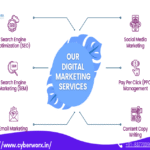People don’t just type random words into search engines anymore. They no longer care only about what words people type; they care about why they type them. That’s called search intent, and it’s now the heart of smart content strategy.
When someone searches online, they’re looking to learn, compare, or buy. If your content doesn’t match their goal, they’ll leave. This is why big companies are now using search intent mapping to guide how they write, organize, and update every page.
An article that just “ranks” isn’t enough anymore. It has to answer. And if your brand has hundreds or thousands of pages, getting that right takes strategy, not guesswork.
This article explains why more businesses are building their content around intent, how it works, and why it’s now a core focus for any serious SEO program.
Search Intent Connects User Needs To Content Creation
When companies make content without understanding what people are looking for, it doesn’t work. It might look nice or be full of keywords, but if it doesn’t answer the user’s real question, they’ll skip it.
This is where search intent mapping becomes powerful. It helps businesses match their pages to what people are trying to do, whether it’s to learn, compare, or buy.
Before, companies just added the right keywords and hoped their page would rank. Now, Google looks at why someone is searching. Are they asking a question? Trying to decide? Ready to buy?
That’s why working with an enterprise SEO company can be very helpful. These companies know how to study what users want and build content that fits those needs. They use tools and research to plan content that makes sense for each part of the customer journey—from learning about a product to making a purchase.
They don’t guess, they build smart content systems that help real people at the right time.
Enterprise Content Must Match Every Buyer Journey Stage
Big companies can’t just write one article and expect it to work for everyone. People search for different things depending on where they are in their buying journey. Some are just starting to learn. Others are comparing products. And some are ready to buy right now.
Let’s take the example of someone buying software. At first, they might search for “what is payroll software.” Later, they might ask, “Best payroll software for small businesses.” And then, they may search for “QuickBooks vs Gusto.”
Each of these searches means something different, and each one needs its own kind of content to match what the person is looking for.
That’s where an enterprise SEO company comes in. They create a plan that covers all three main steps:
- Awareness – when someone is just learning
- Consideration – when they’re comparing options
- Decision – when they’re ready to choose and buy
By mapping search intent at every step, the company ensures that each page gives people the right information at the right time. They also link pages together so people can easily move from learning to buying.
This makes users feel like the website “gets” them and helps businesses get better results from their content.
Search Engines Now Care More About Intent Than Keywords
Today, Google is much smarter than it used to be. It doesn’t just look for matching words when someone types a search. It tries to understand what the person really wants to find.
That means the same word can show different results for different people. For example, someone searching “iPhone 15” on a computer in the daytime might see review pages. But another person searching the same thing at night on their phone might see store pages with prices.
This is what search intent mapping is all about.
An enterprise SEO company uses smart tools to figure out what people expect to see when they search certain words. Then they help businesses create the right kind of pages—like how-to guides, videos, product lists, or comparison charts.
This way, the content doesn’t just show up in Google. It actually gives people what they’re looking for.
Intent-Based Content Boosts Engagement And Conversions
When content is exactly what someone is trying to do, they stay around a little longer and take some action.
Backlinko found that Google’s algorithm favors pages that best meet user intent, boosting them up to 25% higher in rankings.
That is huge.
Why does it work? Because users get the page “gets” them. They find what they need quickly. The brand gains credibility in the user’s eyes; thus, they will be more inclined to follow through with a call-to-action.
A smart enterprise SEO company doesn’t just chase traffic. They look at why people are coming to your page—and what you want them to do next. They design each piece of content to match the user’s intent and guide them towards your goal.
For example, if someone searches for “best video editing software,” they probably want a list, pros and cons, maybe even a price chart. If you give them that, they stay. If you don’t, they leave.
B2C And B2B Use Intent Mapping In Different Ways
Not all businesses are the same. A company that sells clothes to people (B2C) uses intent mapping differently than a company that sells accounting software to other businesses (B2B).
B2C content needs to be fun, simple, and quick to read. People want things like gift ideas or fashion tips. They like short content with pictures and fast answers.
B2B content has to be more detailed. Business buyers usually take more time to make a choice. They want facts, side-by-side comparisons, and real reviews before they trust a product.
An enterprise SEO company knows how to use intent mapping the right way for each type of business. For B2C, they might create helpful guides like “Top Holiday Gifts.” For B2B, they write longer articles that answer tough questions and help business buyers feel sure.
It’s all about knowing what people need—and giving it to them in the best way.
Intent Mapping Cleans Up Scattered, Outdated Content
Big companies often have tons of content, but not all of it works well. Some of it is outdated. Some pages say the same thing. Some don’t help users at all. This confuses both users and search engines.
Search intent mapping helps fix that.
When an enterprise SEO company conducts an intent audit, it examines every page and asks, “What is this trying to do? What kind of user is it helping?” Then, it organizes the content based on user goals.
They also find gaps—places where important content is missing. They remove pages that no one needs. And they make sure all the parts of the website work together instead of against each other.
This makes your website more useful. It helps people find answers faster. And it makes your team’s work more focused and effective.
AI Helps Write, But Intent Mapping Gives It Direction
Many companies are using AI tools now to write blogs, product pages, and FAQs. That’s fine, but AI can’t replace smart planning.
AI doesn’t know your customer like you do. It can’t guess what stage of the journey a person is in. It might make a page with the right words, but the wrong message.
That’s why intent mapping matters even more in the age of AI.
An enterprise SEO company uses AI for research and support, but they don’t let it lead the strategy. They use it to spot trends, check what users are clicking, and test different versions of content. But real people still plan the content around real user needs.
This combo of AI + human insight is what helps content stand out in a sea of sameness.
User Data Improves Intent Mapping Over Time
Intent mapping isn’t something you do once and forget. You have to keep checking how users act on your pages—what they click, how far they scroll, where they stop.
That’s where tools like Hotjar and Google Analytics help. They show you what users are actually doing, not just what you think they’re doing.
For example, maybe you wrote a product page for people ready to buy, but most of your visitors are still researching. That means the intent is off. You may need to add more explainer content or comparisons.
An enterprise SEO company watches this data closely. It adjusts the content based on real user behavior, creating a feedback loop of user actions → insights, → better content.
The more you do this, the better your content becomes. It keeps growing smarter—and so do your results.
The Future Of Content Is Based On Intent, Not Just Keywords
Search is changing. People don’t just type words into Google anymore. They use voice search, mobile apps, and even chatbots. That means the way they ask questions is changing—and the way you answer has to change too.
Focusing only on keywords won’t work much longer. You need to focus on what the person wants to do with that keyword.
Smart businesses are already shifting their strategies. They’re using intent mapping to guide not just their blogs and landing pages, but their emails, chatbot answers, app content, and more.
An enterprise SEO company can help you build flexible, intent-driven content that works across many platforms, not just search engines.
It’s not just about ranking anymore. It’s about being useful in every digital moment.
Conclusion: Search Intent Mapping Is No Longer Optional—It’s The Key To Smart Content
If your content doesn’t match what people are looking for, it won’t get seen. It won’t keep people interested. And it won’t help your business grow.
Search intent mapping helps you fix that.
By working with an enterprise SEO company, many brands are moving away from guessing what to write and building content plans based on real user goals. They’re seeing more traffic, more engagement, and more sales because every page has a purpose.
The truth is simple: search has changed. People are smarter. And your content needs to catch up.
If you want your content to work harder and smarter, start with what your users really want.
That’s how modern enterprise SEO works. And that’s how you win.
- The Role of Search Intent in Enterprise Content Strategy
- Enterprise SEO is evolving fast! This blog reveals how search intent mapping helps brands build smarter content strategies that truly connect with users.
- Enterprise Content Strategy
Related posts:
 Best Website Designer and Web Design Solutions with Cyberworx Technologies
Best Website Designer and Web Design Solutions with Cyberworx Technologies
 Enjoy Ultra 9000 Box of 10 – Power, Flavour, and Convenience Combined
Enjoy Ultra 9000 Box of 10 – Power, Flavour, and Convenience Combined
 Crystal Pro Max + 10000 Box of 10: Long-Lasting Flavour from a Trusted Vape Store in UK
Crystal Pro Max + 10000 Box of 10: Long-Lasting Flavour from a Trusted Vape Store in UK
 Outrank Competitors with Help from a Trusted Denver SEO Agency
Outrank Competitors with Help from a Trusted Denver SEO Agency
 Marathi Birthday Invitation Card Maker Free – Design Stunning Invites Online
Marathi Birthday Invitation Card Maker Free – Design Stunning Invites Online
 Best Inter Colleges In Hyderabad | Shamshabad – Accomplish Academy
Best Inter Colleges In Hyderabad | Shamshabad – Accomplish Academy
 Gojek Clone: Launch a Successful All-In-One Service Platform in 2025
Gojek Clone: Launch a Successful All-In-One Service Platform in 2025
 Integrative Neuro Therapy Certification – Certified Training in Functional & Holistic Approaches
Integrative Neuro Therapy Certification – Certified Training in Functional & Holistic Approaches







